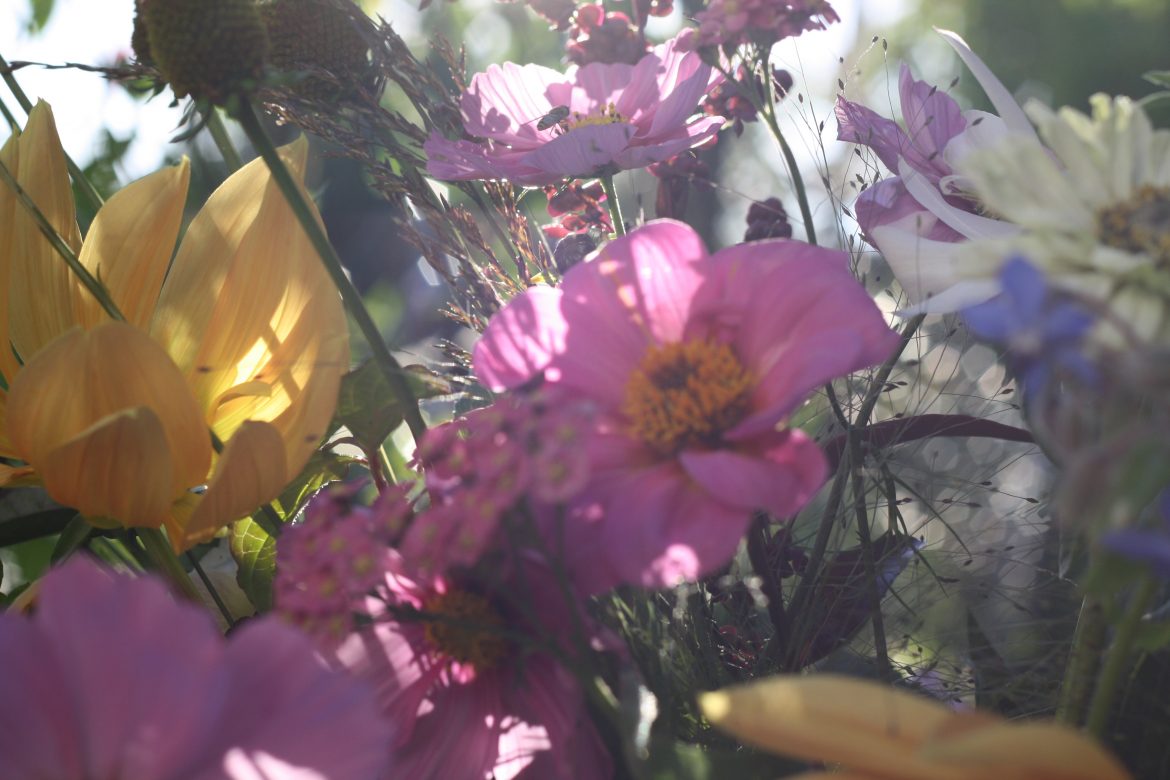Anna Taylor, owner of Anna’s Flower Farm in Audley End, shares what’s going on in the garden this month
Our garden appears to have a second wind after the Autumn Equinox of 21 September. Nights now longer than the days, flowers are seemingly thrown out in double time, in response to the cooler longer nights producing seed to secure their future offspring.
The hedgerows are dripping with rosehips, sloes and hawthorn berries and together with dahlias, grasses and turning leaves; I love bringing it all indoors and enjoying this abundance. The first frosts are not usually until November, but we can be surprised with an early one at any time, so the gardens have that extra ‘frisson’ of delight before much is flattened by Jack.
In preparation for the colder months, bring in your tender plants, including house plants, succulents and pelargonium’s into a frost free porch or greenhouse. Plant your narcissi as soon as possible but save tulips until after the frosts. This is the month to repair lawns, scarify and rake off moss, aerate with a fork and scatter grass seed with a little soil over patches from summer days and paddling pools. Keep up with collecting leaves as they fall to prevent further damage. Leaves make the most wonderful rich garden compost so gather these and store, ensuring they don’t dry out. We collect ours to decompose in a cage of chicken wire and sticks, and then spread it around the base of precious woodland plants like hellebores and epimediums.
This is the month to repair lawns, scarify and rake off moss, and aerate with a fork
Now is a good time to look for naturally self sown annuals. Sometimes is does well to leave weed seedlings to develop until you see the true leaves (the first set are the seed leaves when most plants look the same as one another) and with every year, you will get a little better at spotting those precious seedlings that you will want to keep and grow on. This year we have had a lot of foxgloves, Chinese forget-me-nots, cornflowers and larkspur self sowing. To cover all bases, I lift and plant seedlings in an ideal growing position, and pot some up to over winter in the cold frame.
The most important task of the month however is to mulch. It doesn’t matter really what you mulch with but essentially, spread some kind of thick organic layer on all bare soil and around the base of plants and trees. We have found this to be the one thing over all that contributes the most to a productive gardening year not to mention making your borders look rather smart and tidy.
Mulching in the autumn insulates the beds from cold, prevents weeds from growing and nutrients being leeched off over the winter. It also holds moisture, allowing it to travel to roots, both prevent evaporation and on our dry sandy soil, reduce soil erosion. As we clear a bed of this year’s planting or weed the herbaceous borders, we will follow with a thick, 5-10cm layer of organic matter. This is ideally homemade garden compost but there is never enough, so I spread this across beds on an annual rotation with other beds receiving mulches of well rotten manure or recycled compost, depending on the plant feeding requirements.
If beds are mulched each year (spring or autumn is good, so long as the soil is moist), you will water far less the following summer, enjoy more productive plants and less weeds from a healthier soil. No wonder I am full of the joys as I fill each barrow and spread this ‘golden’ material around the gardens.

